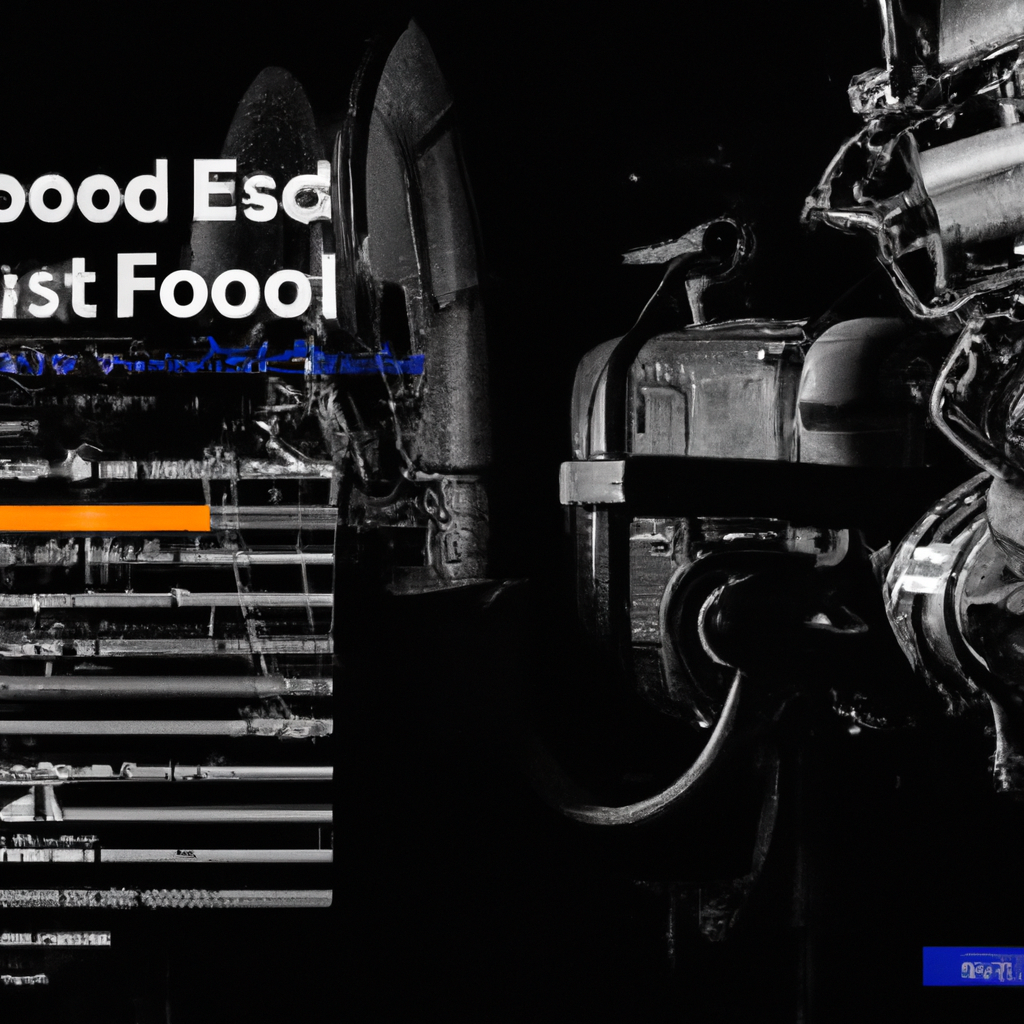Understanding the Lifespan of a 2.3 Ecoboost Engine
An expanse of intricate mechanisms perfects the blend of power and efficiency, defining the character of the 2.3 Ecoboost engine. But it’s the question of its lifespan that often sparks curiosity. In this exploration, I present a comprehensive dive into the longevity of a 2.3 Ecoboost engine, the culmination of meticulous research and hands-on insights. A multitude of factors contributes to the engine’s lifespan, including maintenance habits, driving style, and the vehicle’s usage. With these in view, I aim to provide trustworthy guidance, essential for Ford owners, prospective buyers, and anyone keen on an in-depth understanding of Ecoboost technology.
Fundamentals of a 2.3 Ecoboost Engine
Genesis and Evolution of 2.3 Ecoboost Engine
My fascination with engines led me to a closer look at the 2.3 Ecoboost Engine. The engine came into existence as a creation of Ford in 2015. The 2.3 Ecoboost Engine is an upgrade of Ford’s 2.0L Ecoboost GTDI engine within the Mustang line. The main improvements visible in this engine were larger displacement, more robust block structure, and better cylinder head.
Key Features of 2.3 Ecoboost Engine
The 2.3 Ecoboost engine is an efficient power plant. It possesses direct fuel injection and turbocharging features. This engine is crafted from die-cast aluminum and also incorporates a high level of CO2 control. Furthermore, this engine includes a lower-inertia twin-scroll turbocharger which aids in creating a faster flow of energy.
Function and Performance of 2.3 Ecoboost Engine
Modernity defines this motor. It has a capacity of 2.3 liters and four cylinders, which make it a competent, turbocharged power source. Its performance is boosted further by direct fuel injection and an independent variable camshaft timing system. I find that this system is more conducive to efficient fuel combustion, which, in turn, enhances overall vehicle performance.
Understanding the Lifespan of a 2.3 Ecoboost Engine
Definition of Engine Lifespan
As I delve deeper into engines and their functionality, I realize that the concept of an engine lifespan is paramount. By definition, an engine’s lifespan is the duration within which it performs optimally without requiring major repairs.
What Influences the Lifespan of a 2.3 Ecoboost Engine
The lifespan of a 2.3 Ecoboost Engine can be influenced by various factors, including regular maintenance, driving habits, environmental conditions, and the quality of additives used.
Average Lifespan of a 2.3 Ecoboost Engine
When well-maintained, a 2.3 Ecoboost Engine can easily serve you for a range of 150,000 to 200,000 miles. However, keep in mind that this average can be influenced by the factors mentioned above.

Factors Affecting Lifespan of a 2.3 Ecoboost Engine
Maintenance Schedule and Practices
It’s crucial to stick to the maintenance schedule stipulated by Ford for the 2.3 Ecoboost Engine. This includes regular oil changes, checks, and replacements of spark plugs and air filters, among other things.
Driving Habits
Just like any other machinery, the 2.3 Ecoboost Engine is not immune to misuse. Aggressive driving habits such as instant acceleration and braking can have adverse effects on the engine’s longevity.
Operating Conditions
An engine’s performance and lifespan can drastically be influenced by the environmental conditions within which it operates. Conditions that demand extensive engine function such as towing, off-road driving, and overly dusty environments might reduce the engine’s life.
Optimal Maintenance for Prolonged Engine Lifespan
Consistent maintenance is a non-negotiable practice for anyone interested in extending the lifespan of a 2.3 Ecoboost Engine.
Routine Check-Ups
Prioritize regular engine check-ups. This practice aids in detecting and addressing minor issues before they escalate into costly repairs.
Fluid Replacements and Tune-ups
Ensure to stick to the recommended oil changes and coolant replacements. Regular tune-ups are also essential in maintaining an engine’s performance.
Addressing Minor Issues Promptly
My experience with engines has taught me one thing, small glitches can escalate to complete engine failures if not addressed in good time.

Signs of Engine Degradation
It’s essential to stay observant for signs that your engine might be degrading.
Performance Drop
A decline in engine power or vehicle speed is often an indicator of engine complications.
Increased Fuel Consumption
An unexplained increase in fuel consumption can be a sign that the engine is having trouble operating optimally.
Unusual Noises and Vibrations
Always consider unusual engine noises or vibrations as red flags signaling potential engine problems.
Excessive Fumes and Emissions
Increased engine emissions or unusual fumes may point to engine degradation and need immediate attention.
Comparative Analysis: 2.3 Ecoboost Engine vs Other Similar Engines
Lifespan comparison with Other Equivalent Engines
Upon comparison, the 2.3 Ecoboost Engine often surpasses similar engines in its class in terms of lifespan, provided it receives proper maintenance.
Performance Comparison with Other Engines
While pitting it against similar engines, the 2.3 Ecoboost Engine consistently outperforms several counterparts in performance efficiency.
Cost-effectiveness Compared to Other Engines
More often than not, the 2.3 Ecoboost Engine is more cost-effective due to its longevity and efficient fuel consumption patterns.
Reviews and Opinions on 2.3 Ecoboost Engine Lifespan
Opinions from Industry Experts
Most industry experts appreciate the 2.3 Ecoboost Engine for its efficiency, potency, and the manufacturer’s commitment to sustainable development.
Feedback from Long-term Users
So far, the majority of long-term users of the 2.3 Ecoboost Engine commend its longevity factored by consistent vehicle maintenance.
Analyzing Common Complaints and Issues
Although few, some users have raised concerns about the engine’s water pump design as it tends to fail prematurely without any warning signs.
Improving the Lifespan of a 2.3 Ecoboost Engine
Tips and Practices for Enhancing Engine Lifespan
To improve the lifespan of the 2.3 Ecoboost Engine, uphold regular maintenance, drive responsibly, and pay attention to warning signs.
Benefits of Timely Repairs and Maintenance
Timely repairs and maintenance improve the engine’s performance, ensure its longevity and save you the hassle of unnecessary breakdowns and high repair costs.
Addressing Common Issues Affecting 2.3 Ecoboost Engine Lifespan
Identifying Common Problems
To maintain the benefits of your 2.3 Ecoboost Engine, it is crucial to routinely check for signs of potential issues like oil leaks, overheating, and carbon build-up.
Expert Tips on Fixing Common Issues
Chances of resolving issues are higher when addressed early. Always stay ahead by ensuring routine engine check-ups, using recommended engine oil, and ensuring you replace worn-out parts promptly.
Conclusion: Is the 2.3 Ecoboost Engine Worth It
Summarizing the Lifespan of a 2.3 Ecoboost Engine
Indeed, the 2.3 Ecoboost Engine stands the test of time, presenting an average lifespan of around 150,000 to 200,000 miles when well-maintained.
Importance of Maintenance in Engine Longevity
Maintenance is a non-negotiable practice in ensuring the longevity of the 2.3 Ecoboost Engine. This routine includes routine checks, fluid replacements, and prompt address of any arising issues.
Final Thoughts on 2.3 Ecoboost Engine Lifespan
In summary, the 2.3 Ecoboost Engine is a worthy investment. It is sturdy, efficient, and boasts an impressive lifespan if properly managed. Therefore, to anyone looking for a reliable, performance-based engine, this engine is worth some serious consideration.


